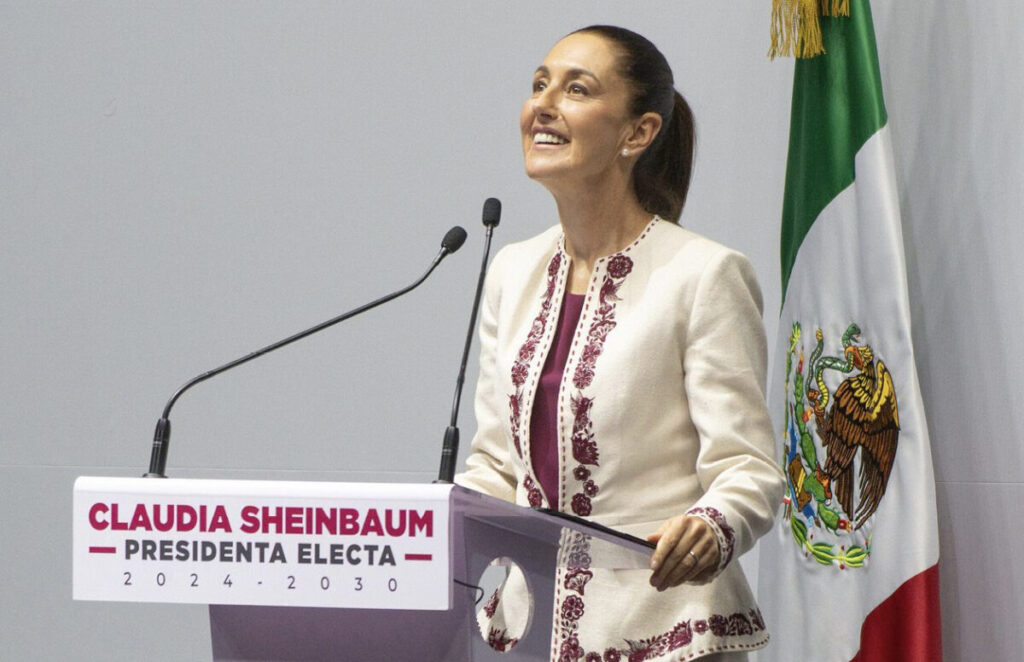Days after entering the office, the Trump administration announced rates for important US trading partners. While Canada and Mexico negotiated a one-month stay, rates seem to play an even greater role in American trade policy until 2029. Paula Mints is investigating the history of American rates with a focus on the solar industry.
From PV Magazine 3/25
On 1 February, the United States announced a rate of 25% for Mexican goods and non-oil and gas imports from Canada. Canadian oil and gas were hit by a rate of 10%, with the same applied to all Chinese imports.
Two days later, Mexican President Claudia Sheinbaum said that she had negotiated a one -month delay before the rates.
The Canadian Prime Minister Justin Trudeau announced a retaliation levy of 25% rate in the American import, including agriculture, clothing, machines, wood, paper and beauty products, with the levies that are introduced for three weeks. A rate for imported American energy was considered before a one-month stay in the Canada rates of the United States on 3 February was also announced.
President Trump introduces rates under the US Tariff Act of 1930 and the International Emergency Economic Powers Act of 1977 (IEEPA), the last signed by President Jimmy Carter in 1977 during the Iran hostel, as a result of which the President enables the charges during a national emergency situation.
During his first week at the office, Trump ordered his proposed cabinet – before their appointments were confirmed – to fully analyze the American trade policy before 1 April 2025, including trade agreements, global tax and international exchange rates.
The United States has a history of using rates in its trade strategy. Import tariffs were used to finance the government until 1862. On the campaign track, Trump encouraged the elimination of federal taxes to collect the government instead on tariff income, through a new “external income department”.
History lesson
The rates of 2012, 2014 and 2022 that influence the import of solar energy based on the US Tariff Act of 1930. That law, known as a smooth-hawley, is generally regarded as the most protectionist in the history of American protectionist deeds. The law led to the highest rates in 100 years, between 50% and 100% on around 900 products. It also started a global trade war.
President John F Kennedy signed the Trade Expansion Act of 1962 to give the US presidency a stronger negotiation forces with partner countries. The trade expansion law granted the US President unprecedented power to negotiate rates of up to 80%. The action may be intended as a negotiating instrument, but is often used as a bat.
The 201 -rates section that was introduced in 2018, on solar cells and modules, among other things, were based on the 1974 Trade Act. In theory, it was designed to expand the participation of American manufacturers in global markets and to reduce commercial barriers. It also crucial that the American president gave a broad, fast authority. This allows the US president to offer temporary lighting to an industry. Section 201 of the Trade Act from 1974 theoretically sets a high bar for petitioners who want rates. Unfortunately, the theory and practice often fail to cross and as soon as the door is open to interpretation based on personal bias and agenda, it is a challenge to close it.
Trump declared a National Energy Emergency on January 20, so the iDeepa, which means that the president can confiscate ownership, became important to look, because the administration clearly tested its powers under the law.
Rates and solar energy
Rates are useful as aids for protecting domestic industry, but not so much as instruments of economic torture. Regarding the solar industry, production is dominated by producers based in China who are willing to work on thin margins. Without any protection to level the playing field at the prizes they can offer, there is simply no game.
The BIDEN administration, while left earlier Trump rates, used taxes as a tool to tackle the dumping of solar products, the bypass of international trade standards and to respond to, or to compensate for such low prices for Chinese products.
At the start of the Biden administrations there was very few domestic solar energy production to protect. Thanks to the Inflation Reduction Act (IRA), the United States 2025 started with nearly 50 GW of annual PV module -assemblage capacity and will have 15.5 GW cell capacity once the plans of Hanwha Qcells have been realized.
It is doubtful that the United States could have realized the successful disaster of an important new capacity with only rates. When the Obama Government imposed rates, American solar production in 2012 and 2014 was not expanded. The production grew during the BIDEN administration because of the IRA and possibly, because the administration rates maintained and new added. That observation is not an argument for or at rates, it is an observation that as long as the solar chain remains unbalanced, strategic use of rates can be justified.
The weapon policy for weapons never appears to be good and risks trade wars. The prices for consumables and raw materials will rise and drip to higher prices for end products.
About the author: Paula Mints is founder and chief analyst of SPV market research on solar energy. She previously worked for strategies unlimited and navigant, where in 2012 she was director of Energiepraktijk to set up SPV market research. Her expertise includes global solar market and applications; PV, cell and module costs and price analysis; system and component analysis, including inverters, trackers and other balance of system equipment; And trend analysis.
This content is protected by copyright and may not be reused. If you want to work with us and reuse part of our content, please contact: editors@pv-magazine.com.
Popular content


